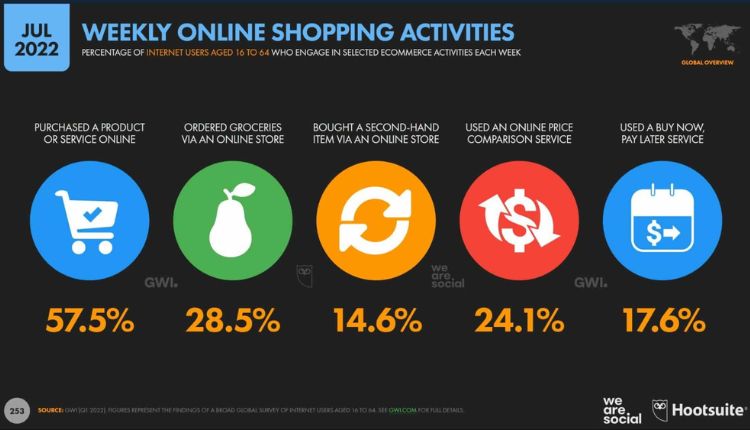If you run an e-commerce business, you know how important it is to get your products in front of potential customers. But with so many online stores competing for attention, how can you stand out from the crowd?
One of the most effective ways to showcase your products and drive more traffic and sales to your website is by using product listing ads (PLAs).
What are Product Listing Ads
Product listing ads are advertisements displayed in search engines, social media and app search results that e-commerce businesses use to increase sales. When marketing departments apply this strategy, they can get impressions from users who click on the listed images of products above text search results.
Unlike standard text-based ads, product listing ads show more detailed information about your products, such as:
– Product name
– Product image
– Product price
– Product rating
– Product availability
– Merchant name
The information in the ads comes from your product data feed, which is a file that contains all the relevant details about your products. You can upload your product data feed to platforms like Google Merchant Center or Facebook Catalog Manager, and then link it to your advertising account on Google Ads or Facebook Ads.
Benefits of Product Listing Ads
Product listing ads can offer many benefits for e-commerce businesses, such as:
– Increased visibility: Product listing ads can appear on various Google properties, such as Google Search, Google Shopping, Google Images, YouTube and Gmail. They can also appear on Facebook, Instagram and other partner websites and apps. This means you can reach more potential customers across different channels and devices.
– Higher click-through rates: Product listing ads can attract more attention and clicks from users than standard text-based ads, because they show more information and visual appeal. According to a study by WordStream, product listing ads have 21% higher click-through rates than text ads on Google.
– Better qualified leads: Product listing ads can help you generate more qualified leads, because users who click on them have already seen the product image, price and other details. This means they are more likely to be interested in buying your products than users who click on generic text ads.
– Lower cost per conversion: Product listing ads can help you lower your cost per conversion, because you only pay when users click on your ads and visit your website or view your inventory. You don’t pay for impressions or views. Additionally, product listing ads can help you increase your conversion rates, because users who land on your website are more likely to purchase your products after seeing them in the ads.
How to Create Product Listing Ads
To create product listing ads, you need to follow these steps:
- Upload your product data feed to a platform like Google Merchant Center or Facebook Catalog Manager. Make sure your product data feed is accurate, complete and up-to-date.
- Link your product data feed to your advertising account on Google Ads or Facebook Ads.
- Create a product advertising campaign and choose your budget, targeting and bidding options.
- Monitor and optimize your product listing ads performance using analytics tools like Google Analytics or Facebook Pixel.
Product Listing ad Monitoring
To get the most out of your product listing ads campaign, you need to monitor and optimize your performance regularly. Some of the key metrics you should track involve:
– Impressions: The number of times your product listing ads are shown to users.
– Clicks: The number of times users click on your product listing ads.
– Click-through rate (CTR): The percentage of impressions that give rise to clicks.
– Cost per click (CPC): The average amount you pay for each click on your product listing ads.
– Conversions: The number of times users complete a desired action on your website after clicking on your product listing ads, such as making a purchase or signing up for a newsletter.
– Conversion rate: The percentage of clicks that result in conversions.
– Cost per conversion: The average amount you pay for each conversion from your product listing ads.
– Return on ad spend (ROAS): The ratio of revenue generated from your product listing ads to the amount spent on them.
You can use these metrics to evaluate how well your product listing ads are performing and identify areas for improvement.
Conclusion
Product listing ads are a powerful way to promote your e-commerce products and boost your online sales. By using product listing ads, you can increase your visibility, attract more clicks, generate better leads and lower your cost per conversion.
To create effective product listing ads, you need to upload a high-quality product data feed, link it to your advertising account, create a product advertising campaign and monitor and optimize your performance.
